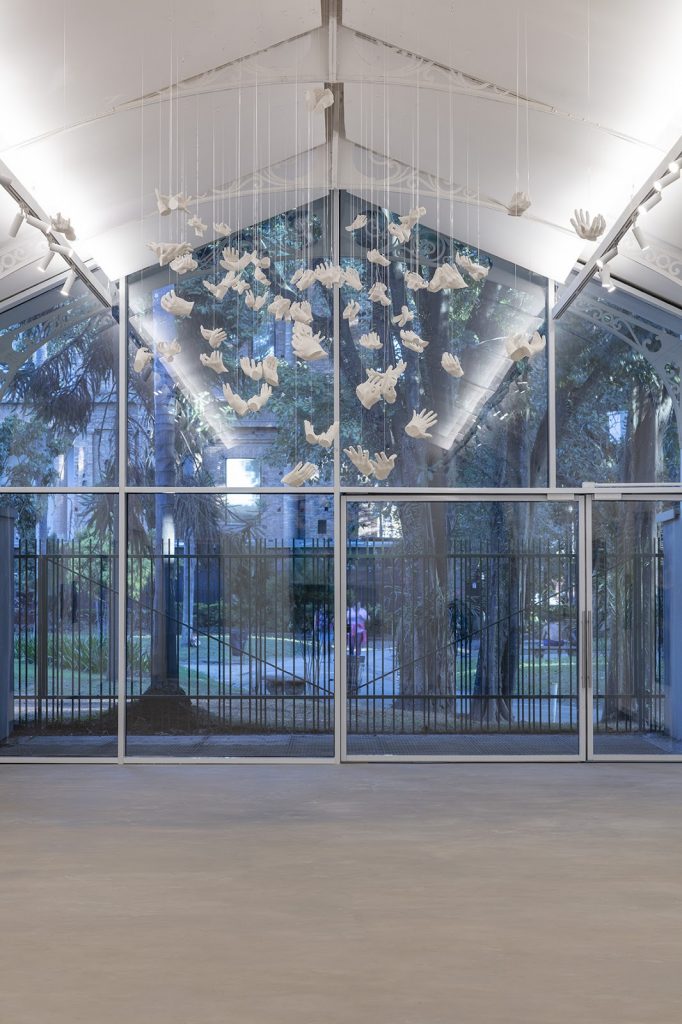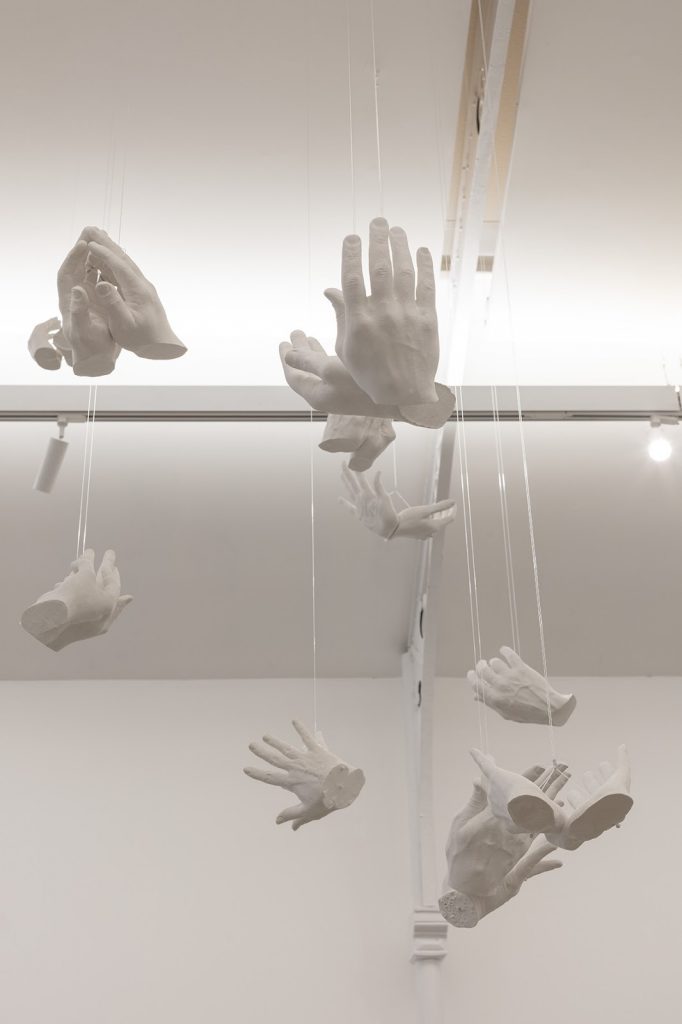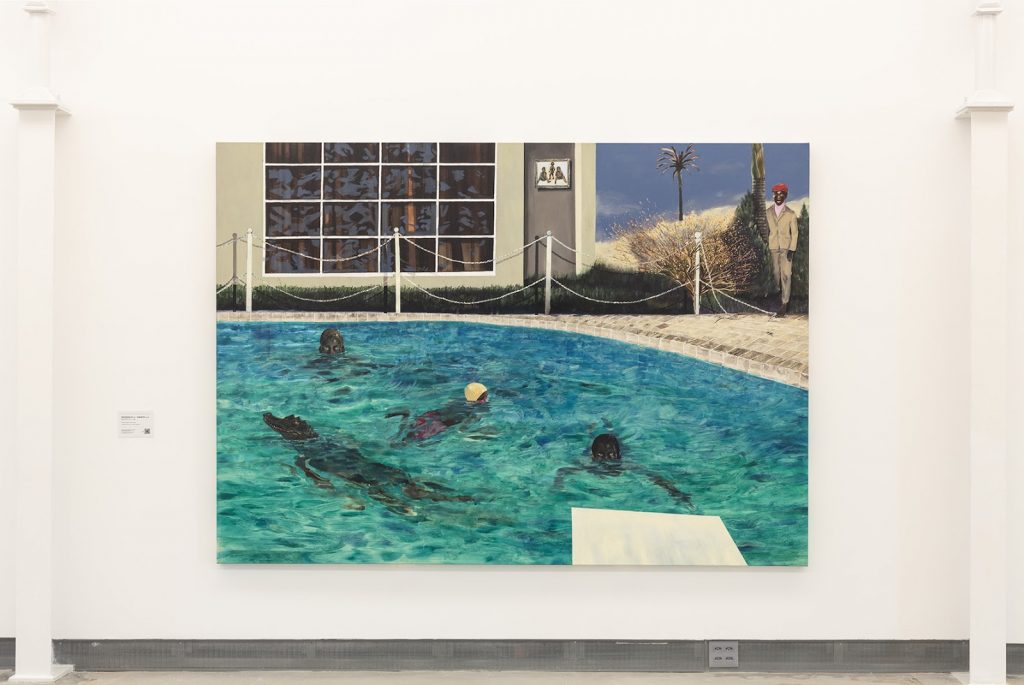
“Antônio Obá: Revoada”, on display at Pinacoteca Contemporânea, presents a new look at childhood
With works that combine the memory of historical events and the artist's individual memories, “Antônio Obá: Revoada” is the first exhibition of Brazilian art to occupy Galeria Praça, in the recently inaugurated Pinacoteca Contemporânea building. On display until February of next year, the show features a set of 20 paintings that deal with themes related to childhood and the struggle for the rights of the black population, in addition to an unprecedented installation in dialogue with the history of the museum.
the artist-educator
Antônio Obá was born in 1983, in Ceilândia, a satellite city of Brasília, where he still lives and works today. During his career in the field of visual arts, which now completes 20 years of career, Obá explored various supports, such as painting, drawing, photography, video, object, installation and performance.
His pseudonym “Obá” means “king” in Yoruba, but it is also the name given to the yaba that represents the turbulent waters. It is in this intense movement that the artist has shown himself to be one of the greatest talents in Brazilian contemporary art. In these two decades of production, the discussion about the memory and identity of black bodies has always been present in his work, as well as the relationship between art, body and religiosity.
In addition to being a visual artist, Antônio Obá is also an art educator and teacher. Graduated in visual arts from the University of Brasília (UNB), he worked at Centro Educacional 15 in Ceilândia teaching art and creative processes, and at the Center for the Development of Creative Potential (CRIAR), in Taguatinga, as a high school teacher for children and adults. Interested in the role that art plays as a builder of knowledge and autonomy, the artist crosses his two areas of activity building a work that addresses socio-educational issues.
The reframing of images
From the remembrance of episodes of violence that occurred in different parts of the world, Antônio Obá creates mythical scenes that give new meanings to his characters. Having the figure of the child as the starting point of each work, he paints environments with delicate strokes and colorful brushstrokes, which directly transport the public to the region of origin of the artist – the cerrado of the Federal District. The pools of blue and green water, often portrayed in the paintings, seem to refresh the hot and dry landscapes, full of brownish vegetation, burned by the sun and precede the cozy evenings with pink skies.
It is through this setting that Obá establishes links and combinations between his personal path in life and the general history of the world, creating a unique narrative. In his paintings, the portrayed characters usually make reference to real people who were protagonists in situations of violence and tragedies. In these cases, the artist uses these images to reframe the subjects and create symbols.
In “Angelus”, for example, the artist is based on a photograph from 1976, taken during a fire in Boston, in the United States, in which two girls fall from an emergency staircase, one on top of the other. From there, Obá deals with the cycle of life – appropriating the representation of the two girls, placing them in the scene with other children, flying over a central figure that is next to a bonfire and leaning against a tree, two symbols of consummation and elevation of life.

flock
Built especially for this show, the work that gives the exhibition its name presents a direct dialogue with the history of the museum. Formed by 180 pairs of children's hands molded in resin and suspended from the ceiling, “Revoada” recalls the origin of Pinacoteca do Estado de São Paulo, which was born to be a school. At the beginning of the 20th century, the building housed the Lyceum of Arts and Crafts, where artistic education courses were held aimed at professional training for students.

To create the resin sculptures, Antônio Obá organized a series of workshops at Pina Contemporânea, Ocupação 9 de Julho (Movimento Sem Teto do Centro) and Colégio Vera Cruz. Positioned at the top of Galeria Praça, these pieces converse with the iron arches that were preserved from the time when the building housed the former Prudente de Morais State School. Teaching casting and modeling procedures, the artist rescues the presence of children in these places and resumes the importance of building a collective memory of the education process. In addition to its relationship with teaching, “Revoada” is also linked to religiosity. These plastered hands refer to ex-votos (objects that believers offer in devotion to the saints), which Obá has admired since he was a boy, when he accompanied the pilgrimages of the Divine Eternal Father, in the interior of Goiás.

The loss of naivety
Unlike the conventional representations of children and young people in the history of art, in Antônio Obá's painting, these characters appear as individuals who are more aware of their time. In black and mixed-race bodies, these beings appear with marked facial expressions, almost like adults, facing the viewer. They often appear as entities, ghostly beings that guard or accompany adults.

In these pictures, the children interpret the historical characters that the author uses as a reference, or even the painter himself – and there is no naivety in this childhood. It is through this reversal of roles that his work transforms tragic episodes of history into poetic passages, without ceasing to express the violence suffered by those who lived through those moments.
Curated by Ana Maria Maia and Yuri Quevedo, “Antônio Obá: Revoada” shows how the intersection between art and education occurs in the artist's creative process and explores the three important axes that guide his production: the remembrance of historical facts, the creation of symbols and new meanings and the educational process. The visitor can also listen to explanatory audios about eleven works presented, recorded by the artist himself. With works rarely exhibited in Brazil, the show is a must for anyone visiting São Paulo.
Service:
Exhibition: Antônio Obá: Revoada
Curatorship: Ana Maria Maia and Yuri Quevedo
Location: Pinacoteca Contemporânea – Galeria Praça
Visitation: 24.06 to 18.02.2024 – From Wednesday to Monday, from 10am to 6pm




- April 15, 2025
Gallery Of Painting By Matt Rota - USA

- April 15, 2025
Gallery Of Illustration By Egle Plytnikaite - Lithuania

- April 15, 2025
Gallery Of Humor Drawing By Pierre Ballouhey - France

- April 14, 2025
Gallery of Illustration by Ananda Ferreira – Brazil


- April 14, 2025
Gallery of Illustration by Luis San Vicente – Mexico

- April 15, 2025
Di Cavalcanti mural valued at approxima…

- April 15, 2025
Mario Vargas Llosa, the last giant of L…

- April 14, 2025
Art, Culture, and Technologies for Peace

- April 14, 2025
Cuartel del Arte Exhibits “Graphic Path…

- April 13, 2025
Malba on the Way to 25 Years

- April 12, 2025
Exhibitions celebrate 65 years of Brasí…

- April 12, 2025
Weekend 2025 Prepares for Two Days of A…

- April 10, 2025
Luis Felipe Noé Dies at 91

- April 09, 2025
Buenos Aires Awakens to Art

- April 09, 2025
Rosario Latin American Film Festival

- April 09, 2025
Nahuel Vecino's Largest Exhibition

- April 08, 2025
Bogotá hosts the exhibition by artist J…

- April 07, 2025
Paris Latin American Film Festival Winn…

- April 06, 2025
"Capital Feria": The First Latin Americ…

- April 06, 2025
African and Latin American Art

- April 05, 2025
The first exhibition dedicated to a Lat…

- April 05, 2025
The first private art initiative outsid…

- March 30, 2025
The first Latin American Art Fair in Có…

- March 30, 2025
Women's Art, from the Ella Fontanals-Ci…

- March 29, 2025
Latin American Art and Architecture in …

- October 08, 2023
Illustrations reflect the brutal Israel…

- December 25, 2023
The jury statement of the Iran-Brazil F…

- July 29, 2023
History of Caricature in Brazil

- April 20, 2024
Poignant Image of Grief Wins Mohammed S…

- September 01, 2023
Neural Filters in new photoshop 2023

- October 21, 2023
Erick Meyenberg and Tania Ragasol at th…

- August 09, 2023
Venezuela mural expresses solidarity wi…

- May 20, 2024
Latin American Festival of Performing A…

- March 30, 2024
illustration websites in Latin America

- March 15, 2024
museum of sculpture of Salvador Dali

- March 14, 2024
museum of statue of van gogh

- November 07, 2024
The exhibition “The message behind Bote…

- August 23, 2024
Ai is not our future-Procreate

- March 21, 2024
The history of art in Palestine

- April 22, 2024
Microsoft was recently hit by a 'Mike-r…

- January 12, 2025
The Ralli Museum in Punta del Este

- October 30, 2023
Palestinian turns images of the Gaza co…

- September 08, 2023
BMW Painting Prize: art beyond cars

- July 30, 2024
The artist from San Luis Mirta Celi rep…

- December 01, 2023
Latin American International Graffiti F…

- February 18, 2024
7 Ways to Understand What Visual Arts A…

- October 08, 2023
Illustrations reflect the brutal Israel…

- December 25, 2023
The jury statement of the Iran-Brazil F…

- May 15, 2024
Eleven murals for Gaza painted across t…

- November 06, 2023
Heba Zagout: Palestinian artist murdere…

- July 29, 2023
Piracicaba International Humor Exhibiti…

- November 17, 2023
Fernando Botero's work is booming after…

- October 17, 2023
The influence of Latin American artists…

- January 02, 2025
13 commemorations that will mark the cu…

- February 03, 2024
THE HISTORY OF NAIF ART

- September 01, 2023
Neural Filters in new photoshop 2023

- July 20, 2024
First International Mail Art Biennial 2…

- October 23, 2023
Controversy over the project that will …

- October 30, 2023
Palestinian turns images of the Gaza co…

- February 06, 2024
Bolivian artists will be at the 2024 Ve…

- December 10, 2023
Sliman Mansour and Palestinian art on t…

- February 08, 2024
Art Week 2024 in CDMX

- July 30, 2023
Havana Biennia contemporary art exhibit…

- March 14, 2024
museum of statue of van gogh

- April 20, 2024


